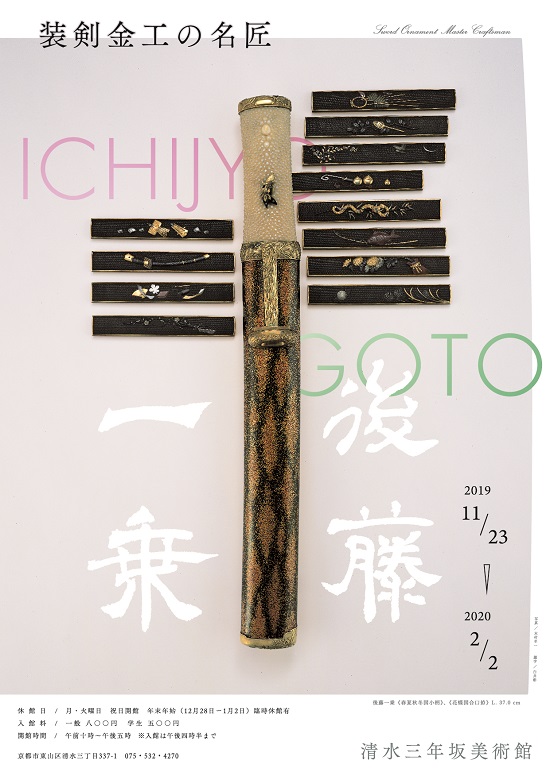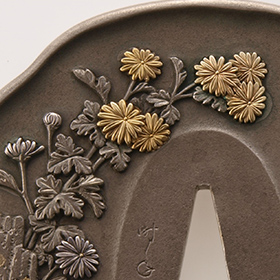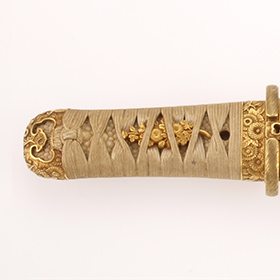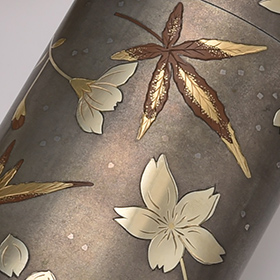
Sword Ornament Master Craftsman Goto Ichijo
As the forms of the various sword fittings such as the tsuba (sword guard), kozuka knife, kougai, menuki (sword hilt) developed, they gradually acquired a decorative richness. The rulers of the country at that time had in their employ skilled decorative sword fitting metal workers, and the Goto clan came to be the most prominent among them. Goto Yujo, founder of the Goto line, served the eighth Shogun, Ashikaga Yoshimasa of the Muromachi Shogunate, and for generations the Goto flourished as purveyors to the shogunate and the clan families. Limiting themselves only to certain materials, techniques and subject matter, they excelled in a prestigious style so favored by the samurai that their works came to be called “Iebori”, meaning ones executed only by “The Clan,” meaning the Goto.
Goto Ichijo was born in Kyoto in 1791 (Kansei 3) to a Goto branch family, the Shichiroemon, and then adopted into another branch of the clan, the Goto Hachirobee. From the age of eleven, he studied metal-carving under Goto Hanzaemonkijo, and after inheriting the headship of his foster family at fifteen, his mastery was recognized despite his youth. As a result, he produced a full set of metal sword fittings at the imperial order of the Emperor Kokaku in 1824 (Bunsei 7). When he journeyed to Edo at the request of the shogunate, he was granted a salary the equal of ten persons combined.
At the time that Ichijo was active, an emerging line of decorative sword fitting metal workers known as “machibori” flourished, producing in an unrestrained style quite different from the Iebori. The rage for Iebori lost steam under the power of the flourishing machibori, and Ichijo therefore breathed renewed life into it by creating his own unconventional style. Not only did his works have a new freshness about them, they exhibited his tried-and-true metal carving techniques as well as an elegance and grace that stemmed from his knowledge of haikai and waka.
At this exhibit we present the entirety of the Museum’s collection of Ichijo artworks as well as those of decorative sword fitting artisans such as Funada Ikkin and Nakagawa Issho, Ichijo’s disciples, and Issho’s brother Shoami Katsuyoshi, who learned the Ichijo method through Issho. We hope that you enjoy this display of skillful carving technique and elegant grace.
 2025-12-07 / 2019-11-23
2025-12-07 / 2019-11-23 


